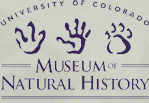 |
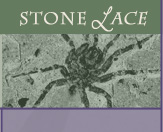 |
||
|
Each of the organisms represented in these fossils has a living relative today. Much of the additional information about the fossil species comes from observing their descendents. To view larger versions of the images below, click on a thumbnail image or the specimen name. The larger version will display in a new browser window. Use the page number links below the images to go to the next page. 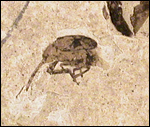 Trypanorhynchus obliquus, Common Name: Weevil or Snout Beetle (UCM #8273). All weevils are plant-feeders and most prefer only one species of plant. The larvae of weevils feed inside plants, either in roots, leaves, stems, seeds or flower buds. For this reason, they are pests with an important economic impact. They are easy to distinguish from other beetle groups because of their long snout. Trypanorhynchus obliquus, Common Name: Weevil or Snout Beetle (UCM #8273). All weevils are plant-feeders and most prefer only one species of plant. The larvae of weevils feed inside plants, either in roots, leaves, stems, seeds or flower buds. For this reason, they are pests with an important economic impact. They are easy to distinguish from other beetle groups because of their long snout.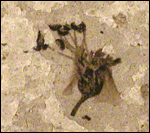 Phenanthera petalifera, Common Name: Flower (UCM #18594). This small flower, collected in 1908, is preserved in exquisite detail. The filaments holding the stamen are easily recognizable, two petals can be seen drooping over the sides of the flower, and the stem, though broken, can be seen protruding from the bottom. Phenanthera petalifera, Common Name: Flower (UCM #18594). This small flower, collected in 1908, is preserved in exquisite detail. The filaments holding the stamen are easily recognizable, two petals can be seen drooping over the sides of the flower, and the stem, though broken, can be seen protruding from the bottom.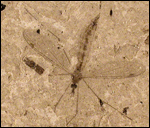 Tipula limi, Common Name: Cranefly (UCM #30003). These flies are often mistaken for giant mosquitoes, but they do not have piercing-sucking mouthparts and are not able to bite. They live their whole lives in and around water. Most adults only live for a couple of days and many do not feed. If you look closely you can see this insect's eyes and mouthparts. Tipula limi, Common Name: Cranefly (UCM #30003). These flies are often mistaken for giant mosquitoes, but they do not have piercing-sucking mouthparts and are not able to bite. They live their whole lives in and around water. Most adults only live for a couple of days and many do not feed. If you look closely you can see this insect's eyes and mouthparts.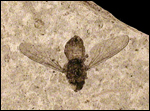 Cheilosia miocenica, Common Name: Flower Fly (UCM #4444). Flower flies are often seen hovering around flowers, hence their common name. They are excellent flyers. Many are excellent mimics of bees and wasps - both in appearance and in their behavior (they often buzz and act like they have a stinger - but they cannot sting you). Cheilosia miocenica, Common Name: Flower Fly (UCM #4444). Flower flies are often seen hovering around flowers, hence their common name. They are excellent flyers. Many are excellent mimics of bees and wasps - both in appearance and in their behavior (they often buzz and act like they have a stinger - but they cannot sting you).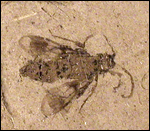 Agenia saxigenia, Common Name: Common Sawfly (UCM #32801). These wasps are usually brightly colored. The larvae look a lot like caterpillars and can often be found feeding on foliage. They usually feed on trees and shrubs and some reach such high numbers that they become pests. The adults mainly feed on other insects or animals. Agenia saxigenia, Common Name: Common Sawfly (UCM #32801). These wasps are usually brightly colored. The larvae look a lot like caterpillars and can often be found feeding on foliage. They usually feed on trees and shrubs and some reach such high numbers that they become pests. The adults mainly feed on other insects or animals. |

|
||
|
|
|||
|
|||
